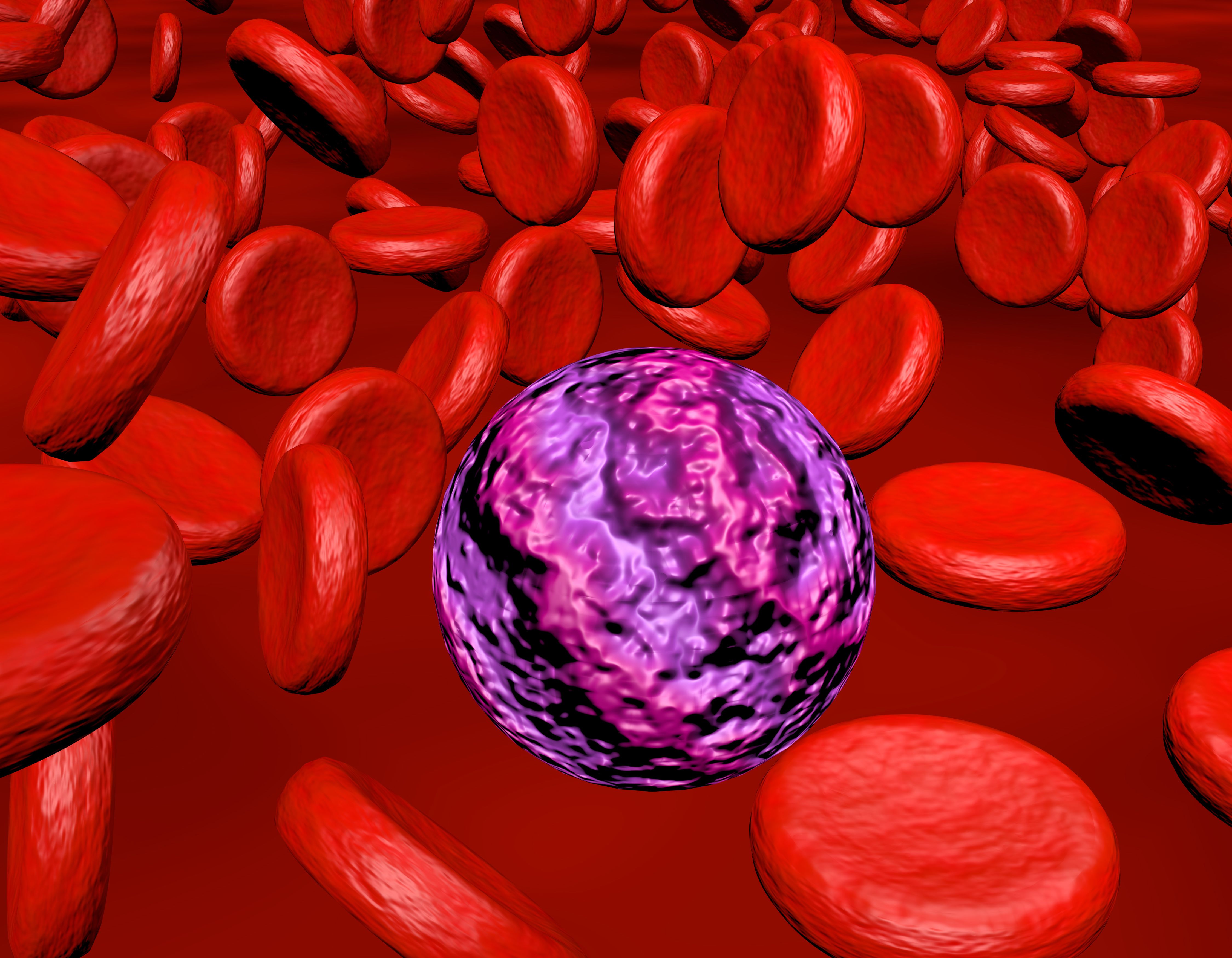Dasatinib Misses Survival End Points in Core-Binding Factor AML
Compared with standard therapy, dasatinib did not improve efficacy for patients with core-binding factor AML.
Compared with standard therapy, dasatinib did not improve efficacy for patients with core-binding factor AML.

Dasatinib (Sprycel) added to induction and consolidation therapy followed by 12 months of maintenance did not improve event-free survival (EFS) or overall survival (OS) compared with standard treatment for patients with core-binding factor acute myeloid leukemia (CBF-AML), according to results from a phase 3 trial (NCT02013648) presented at the European Hematology Association 2025 Congress.
In the standard therapy arm (n = 102), patients had 4-year EFS rates of 41% vs 44% in the dasatinib arm (n = 100; HR, 0.92; 95% CI, 0.63-1.33; P = .66). The 4-year OS rates between each arm were 76% and 78%, respectively (HR, 0.93; 95% CI, 0.53-1.63; P = .79).
In the standard arm, the complete remission (CR) rate was 64.7% and the CR with incomplete hematologic recovery (CRi) was 31.4%, with 1.0% of patients having refractory disease; the 30-day mortality rate was 2%. For the dasatinib arm, the CR was 55% and the CRi was 36%, with 1.0% of patients having refractory disease and the 30-day mortality rate being 3%.
Regarding allogeneic hematopoietic cell transplant (HCT), the CR/CRi rate was 2.9% for the standard arm and 3.0% for the dasatinib arm. Any HCT during the disease course was noted in 27.5% vs 29.0% of patients.
“In patients with CBF-AML, the addition of dasatinib to induction and consolidation chemotherapy followed by a 12-month maintenance treatment with dasatinib did not improve EFS and OS,” Hartmut Döhner, MD, professor of medicine and director of the Department of Internal Medicine III at the University Hospital Ulm and founder and former director of the Comprehensive Cancer Center Ulm in Germany, said in a presentation during the meeting. “The data do not support the encouraging data reported in single-arm phase 2 studies, highlighting again the importance of investigating new agents in controlled randomized trials.”
A total of 204 patients were enrolled between August 2014 and February 2021. Patients were randomly assigned 1:1 to receive daunorubicin and cytarabine as induction therapy followed by high-dose cytarabine as consolidation for 4 cycles or 100 mg of dasatinib on days 8 to 21 plus daunorubicin and cytarabine for induction followed by high-dose cytarabine and dasatinib at 100 mg on days 6 to 28 for consolidation. In the experimental arm, maintenance dasatinib was given at 100 mg on days 1 to 28. Additionally, in the dasatinib arm, a minimal residual disease assessment by reverse transcription quantitative polymerase chain reaction was performed during consolidation and maintenance.
In the standard arm, the median age was 49.8 years (range 18.3-75.7), 50% were women, and AML type included de novo (93.1%), secondary (1.0%), or therapy related (4.9%). KIT was assessed, and the mutations (31.4%) included exon 8 (11.8%), exon 17 (23.5%), and exon 8 and 17 (3.9%), with wild type at 68.6%. FLT3 internal tandem duplication (ITD) was positive in 3.9% and negative in 96.1% of patients. FLT3 tyrosine kinase domain (TKD) mutation was positive in 9.8% and negative in 90.2% of patients.
For the dasatinib arm, the median age was 49.7 years (range, 18.2-77.0), 56% of patients were women, and AML type included de novo (84%), secondary (3%), or therapy related (12%). KIT was assessed and included those with mutation (26%), exon 8 mutation (10%), exon 17 mutation (16%), and wild-type (74%) gene. Patients had either positive (1.0%) or negative (99%) FLT3 ITD. Patients had either positive (11%) or negative (89%) FLT3 TKD.
Adverse effects (AEs) that were hematologic included thrombocytopenia (94% vs 91%; P = .53), leukopenia (91% vs 79%; P = .02), neutropenia (64% vs 70%; P = .53), and anemia (88% vs 88%; P = 1.00) between the standard arm and dasatinib arm, respectively.
Nonhematologic AEs in the standard arm and dasatinib arm included febrile neutropenia (43% vs 44%; P = .85), atrial fibrillation (0% vs 4%; P = .04), colitis (1% vs 8%; P = .02), infection (26% vs 21%; P = .53), pneumonia (19% vs 29%; P = .09), and pyrexia (13% vs 19%; P = .25).
In the dasatinib arm, 64% of patients had serious AEs vs 36% in the standard arm. In the dasatinib arm, 41% were related to treatment. The most frequent serious AEs included pneumonia/pneumonitis, sepsis, febrile neutropenia, and pyrexia.
Reference
Döhner H, Spath D, Saadati M, et al. Phase 3 study of intensive chemotherapy with or without dasatinib in core-binding factor acute myeloid leukemia. Abstract presented at: European Hematology Association 2025 Congress; June 12-15, 2025; Milan, Italy. Abstract S149.